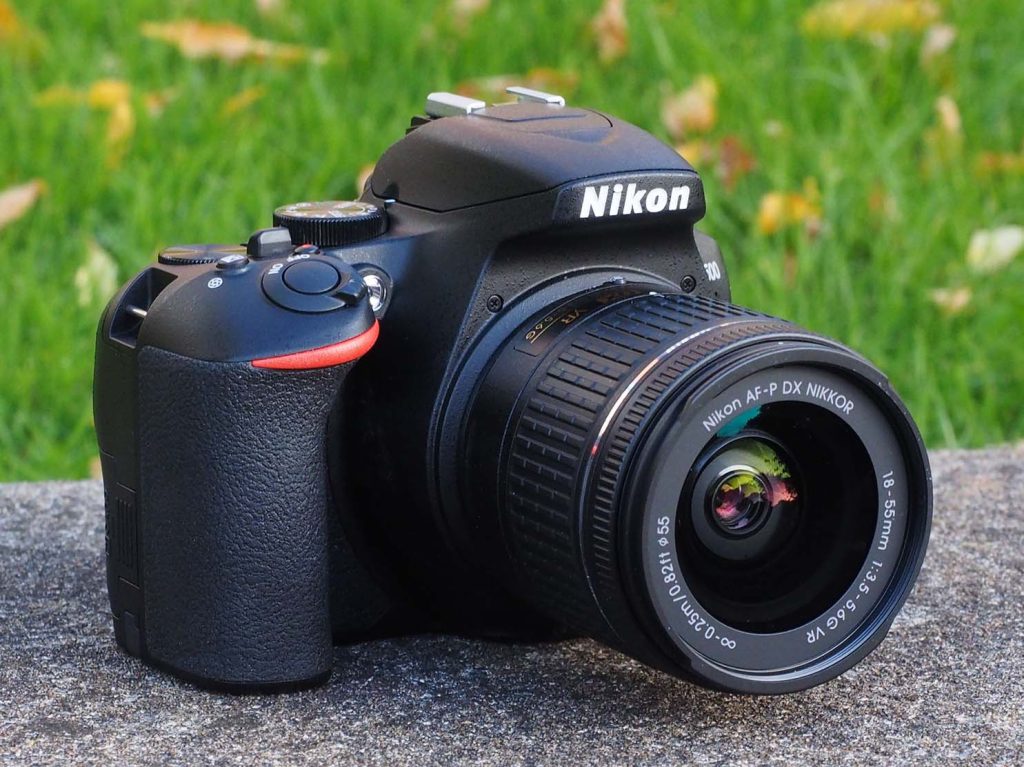Choosing your first DSLR camera can feel overwhelming. With so many models, features, and brands to choose from, beginners may struggle to know where to start. This guide will walk you through everything you need to consider when selecting your first DSLR, ensuring you make an informed choice tailored to your needs and budget.
1. Understanding What a DSLR Camera Is
DSLR stands for Digital Single-Lens Reflex. It combines optics and mechanics from traditional single-lens reflex cameras with a digital imaging sensor. Here’s why DSLRs are popular:
2. Set Your Budget
Your budget will significantly impact your options. DSLRs are available in a wide price range, so knowing how much you’re willing to spend will narrow your choices.
Entry-Level DSLRs ($400-$800):
Perfect for beginners, these models offer user-friendly features and modes for guided learning. Examples:
- Canon EOS Rebel T7
- Nikon D3500

Mid-Range DSLRs ($800-$1,500):
For those ready to explore more advanced photography, mid-range models provide additional manual controls, better autofocus, and higher resolution. Examples:
- Canon EOS 90D
- Nikon D7500
Professional DSLRs ($2,000 and above):
If you’re serious about photography, professional models deliver unmatched performance but come with a steep learning curve. Examples:
- Nikon D850
- Canon EOS 5D Mark IV

3. What Will You Be Photographing?
Your photography goals play a crucial role in choosing the right DSLR. Here’s a breakdown of recommended features based on specific interests:
a) Landscape Photography:
- Look for a camera with a high-resolution sensor to capture detailed scenes.
- Models with weather-sealing are ideal for outdoor environments.
b) Portrait Photography:
- Opt for a DSLR with excellent bokeh capabilities, which depend on aperture settings and lens quality.
c) Sports and Action Photography:
- Fast shutter speeds and a high frames-per-second (fps) rate are essential for capturing motion.
d) Travel Photography:
- Choose a lightweight DSLR with good battery life and a compact form.
4. Important Features to Look For
a) Sensor Size
DSLRs come with two main sensor sizes:
- Full-Frame: Offers better low-light performance and wider field of view, but is pricier.
- APS-C (Crop Sensor): More affordable and compact, ideal for beginners.
b) Megapixels
Don’t fall into the trap of chasing high megapixel counts. For most beginners, anything above 16 megapixels is sufficient.
c) Autofocus System
Look for a DSLR with a reliable autofocus system, especially if you plan to shoot moving subjects. Entry-level DSLRs often have fewer autofocus points but perform well for general use.
d) ISO Range
A wide ISO range ensures your camera performs well in various lighting conditions. Beginners should aim for a camera with at least ISO 100-12,800.
e) Built-in Features
- Wi-Fi or Bluetooth: Makes it easier to transfer photos to your smartphone.
- Articulating Screen: Useful for shooting at odd angles.
- In-Camera Guide: Some entry-level models offer tutorials for beginners.
5. Lenses: The Key to Creativity
One of the biggest advantages of DSLRs is the ability to switch lenses. When starting, consider these essential lens types:
a) Kit Lens (18-55mm):
Often bundled with entry-level DSLRs, kit lenses are versatile and great for learning.
b) Prime Lens (50mm f/1.8):
Known as the “nifty fifty,” this lens is affordable and excellent for portraits and low-light photography.
c) Telephoto Lens:
Ideal for wildlife and sports photography, telephoto lenses allow you to zoom in on distant subjects.

6. Weight and Portability
DSLRs are bulkier than compact or mirrorless cameras, so consider how much weight you’re willing to carry. Entry-level DSLRs are generally lighter, while professional models can be hefty.
7. Brand Considerations
The two dominant DSLR brands are Canon and Nikon, and both have a wide range of options for beginners.
Canon:
- Known for user-friendly menus and a large selection of affordable lenses.
- Popular entry-level models: Canon EOS Rebel T7, Canon EOS 250D.
Nikon:
- Praised for its robust build and excellent image quality.
- Popular entry-level models: Nikon D3500, Nikon D5600.
Both brands offer extensive online communities, tutorials, and support.
8. Try Before You Buy
Whenever possible, visit a camera store and try different models. Pay attention to:
- How the camera feels in your hands.
- The layout of buttons and ease of navigation.
- Weight and size for extended use.
9. Accessories to Get Started
Your DSLR is only part of the equation. Consider investing in the following accessories:
- Memory Cards: At least 32GB with a high write speed for burst shots.
- Camera Bag: Protects your gear when traveling.
- Tripod: Essential for landscapes and low-light photography.
- Cleaning Kit: Keeps your lenses and sensor dust-free.
10. Learning Resources
Once you’ve purchased your DSLR, it’s time to learn! Take advantage of:
- YouTube Tutorials: Channels like Tony & Chelsea Northrup and Photography Pro.
- Books: “Understanding Exposure” by Bryan Peterson is a beginner classic.
- Photography Classes: Many online platforms like Skillshare and Udemy offer affordable courses.
11. Tips for First-Time DSLR Users
a) Shoot in Manual Mode
Practice adjusting settings like aperture, shutter speed, and ISO to gain control over your photos.
b) Experiment with Composition
Learn about the rule of thirds, leading lines, and framing to improve your images.
c) Post-Processing
Basic editing can make a significant difference. Start with free software like Lightroom Mobile or Snapseed.
12. Recommended Starter DSLRs
Here’s a recap of some of the best entry-level DSLRs for beginners:
Choosing your first DSLR camera is an exciting step into the world of photography. Focus on finding a model that fits your needs and budget, and don’t get caught up in flashy features you might not use. Remember, the best camera is the one you feel comfortable using, and with practice, even a beginner model can help you capture stunning images.